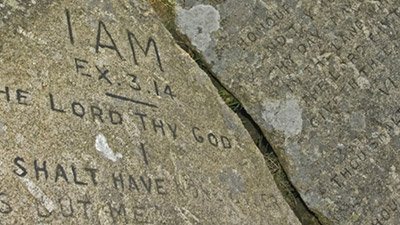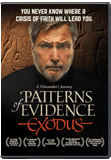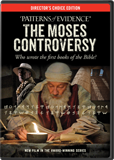Did 600,000 Men Leave Egypt with Moses?
Is the Bible’s account of the Exodus possible and consistent with archaeological evidence?
Modern scholars generally follow the assumption of naturalism—that is, events need to be explainable without resorting to God or miracles. It is no surprise that the Exodus narrative, one of the places God intervenes in history most spectacularly to deliver Israel, is under consistent attack. One detail is the number of people who are said to leave Egypt with Moses. Six hundred thousand men of fighting age are counted in Exodus, and when the elderly, women, and children are counted with that number, the population of Israel rises to easily two million. How could Israel go from a family of 70 to a nation of millions within the span of several generations and a few hundred years?
There are several data points we have to nail down in order to properly defend the Bible’s assertion that 600,000 men left Egypt with Moses in the Exodus. First, we need to estimate the population that went down to Egypt with Jacob, the amount of time and generations that elapsed between then and the Exodus, and any relevant data points that would explain the growth of the population. Once we do that, some fairly simple math will show that not only is the account possible, but plausible. And as a “cherry on top,” we’ll look at a recent archaeological find that adds credibility to the argument.
How Many People Went Down to Egypt with Jacob?
At first glance, the question of how many people went to Egypt with Jacob is simple. Genesis says, “All the persons of the house of Jacob who came into Egypt were seventy” (Genesis 46:27). However, this total specifically does not include the wives of all the sons. The men who had sons had at least one wife each. If any brought more than one wife, that increases the total even more. The text also mentions Jacob’s daughters—plural—even though Dinah is the only one mentioned explicitly, and granddaughters, even though only Asher’s daughter Serah is explicitly named. Unless Jacob’s family was in some way very genetically exceptional, statistically there would have been many more girls who were not named.
There is another group of people that the text does not address but who must have been there—the servants and members of the wider household. Abraham had a great household which Isaac inherited and added more servants to (Genesis 26:14) and which ultimately would have passed to Jacob. These servants were circumcised from the time of Abraham and were also considered part of the covenant community. Jacob’s great wealth he accumulated while living with Laban would have also included servants (Genesis 32:5). Easily hundreds of people would have come along with the family to survive the famine. Jacob’s male descendants might have seen the daughters of these servants as more suitable wives than the pagans surrounding them.
So the caravan that went to Egypt was at least hundreds of people, importantly including a possible population to produce non-related wives for Jacob’s male descendants. This is only a snapshot of Jacob’s family tree at that moment, however, and doesn’t include new descendants born in Egypt. For instance, we know that Jochebed, Moses’ mother, was Levi’s daughter born after he migrated to Egypt.
How Long Was Israel in Egypt?
In fact, Jochebed is an important linchpin for the chronology of how long Israel was in Egypt, because Exodus says specifically that she was born to Levi after he came to Egypt. It is also difficult to argue that she was merely a female descendant and not his actual daughter, because in Exodus 6 she is specifically said to be the sister of Kohath, Amram’s father, who was one of the 70 who came to Egypt.
To put the chronology together, we have to go back to chronological statements made earlier in Genesis. Jacob fled to Laban and had 11 of his 12 sons in the 13 years between marrying his wives and leaving Laban’s household (Genesis 31:38). Levi was born third, and Joseph eleventh. Joseph rose to power when he was 30, and Jacob came to Egypt at 130 years old after 7 years of plenty and 2 years of famine—so Joseph was 39. We can then deduce that Joseph was born when Jacob was 91, and Levi could be, at most, about 10 years older, so Levi would have been about 50 years old when he migrated to Egypt. Ussher’s chronology also states that Levi would have been 50 when he migrated to Egypt.
Exodus 6:16 tells us that Levi lived to 137, meaning that he was in Egypt for just under 90 years. Jochebed could have been born any time during that span because men’s fertility is not as age-dependent as women’s. But even if Jochebed were born the year Levi died and had her children relatively late in her life for a woman (not unprecedented in the Israelite lineage, particularly for children who would become significant in biblical events), Moses barely fits within a short-sojourn timeline, let alone a long-sojourn timeline.1
Short vs. long sojourn is not the topic of this article, but this article does seek to take the “worst case scenario” arising from a plain reading of the text and defend that. If Jochebed was a female descendant of Levi and not his direct daughter and there were a few hundred years of missing genealogical data, that would make the population growth easier. So if one solves the problem for the short sojourn with less time, that solution works just as well for the long sojourn where there is more time for possible generations. For more information, see “How Long Were the Israelites in Egypt?”
So, can a population grow from hundreds of people to millions within a couple hundred years? It turns out that with favorable conditions, the answer is yes.
How to Grow a Nation
The biblical account indicates that the extraordinary growth of the nation of Israel was from God’s blessing (Exodus 1), so we would not be constrained to solely naturalistic explanations. If Israel had a better rate of infant survival and women’s fertility, it is not hard to imagine that alone making up a large part of the explanation. Israel was multiplying so rapidly that Pharaoh oppressed the people and ordered the midwives to kill the boys when that didn’t work.
The biblical account indicates that the extraordinary growth of the nation of Israel was from God’s blessing (Exodus 1), so we would not be constrained to solely naturalistic explanations.
But killing the boys and leaving the girls alive might have had a minimal effect on the growth of the nation. A baby was counted as an Israelite as long as the father was a descendant of Abraham, Isaac, and Jacob, and some men likely took multiple wives and concubines if they could support them. Ephraim and Manasseh were just as Israelite as their cousins, even though their mother was Egyptian. Shelah, the son of a Canaanite woman, was the father of many Judahites. If polygamy were practiced by even a significant minority of the population, that would affect the growth of the population because men can father many more children with multiple mothers. If there were fewer males for a while due to the genocide, the extra women could be “absorbed” into families by becoming part of polygamous marriages or concubines, both practices being described in Israel before and after this point in history.
According to a population growth model presented by Carter and Hardy,2 it is possible to achieve the necessary population growth within 215 years given favorable conditions. Under God’s blessing, the Israelite nation could have certainly experienced these favorable conditions. But if the Israelites were in Egypt for 430 years, it is much easier to achieve that size population.
A model is one tool to help us calculate probabilities, but does the Bible give us more concrete data to allow us to do our own calculations? Genesis 50:22–23 says, “So Joseph remained in Egypt, he and his father’s house. Joseph lived 110 years. And Joseph saw Ephraim’s children of the third generation.” We know that Joseph rose to power when he was 30 and his two sons were born during the seven years of plenty, meaning that the oldest was born when Joseph was 31–36 years old. Ephraim’s great-grandchildren were born by the time Ephraim was 80 years old and likely several years earlier. This gives us an average generation time of 20 years or a little less.
We also have data that some marriages must have happened much later. Moses is only Levi’s great-grandson via his father, Amram, and grandson via his mother, Jochebed. Kohath was included in the list of people who went down to Egypt, meaning that the next generation was fathered at an average age of 60 years. This is not unheard of even in modern times, as the tenth US president, John Tyler, born in 1790, still has an elderly living grandson in 2022.
The number of children the patriarchs had also varied. Benjamin had 10 sons included in Genesis 46, while Dan only had 1 son. It is important to note that these are only the sons they had at the time, and we know that Levi at least had Jochebed after moving to Egypt, and Joseph had other sons who were included under the tribes of Manasseh and Ephraim (Genesis 48:6). But we see that the 12 patriarchs had 51 listed sons, and that gives us an average of 4.25 children per son. If Israel kept reproducing at that rate, they would hit 600,000 male descendants in the seventh generation, which happens to fit with the generation timespans we can calculate from the data Scripture provides.
Wouldn’t Such a Large Population Leave Archaeological Evidence?
Even if such population growth was possible, skeptics point to the lack of evidence that any nation had such large populations. The ruins of ancient towns indicate much smaller populations at that point in history, they claim. But an archaeological find has shown that even large, established, sophisticated groups of people may leave little evidence if they are nomadic and thus do not leave the remains of cities.
Archaeologists were surprised when an ancient mine in Timna, rich with evidence of sophisticated tools and imported goods, was dated not to earlier Egyptian activity but to around the time of David and Solomon, long after the Egyptians left.3 That date makes it likely that the mine was Edomite. But most archaeologists believed that Edom was made up by the biblical authors because of the lack of evidence for Edomites in the archaeological record—until now.
The Timna copper mine was operated by a sophisticated group of people who conducted international trading (based on items found that would have come from far away). But there were no towns, palaces, temples, or other archaeological sites we would expect such a people group to leave. The archaeologist Erez Ben-Yosef formulated a theory: the Edomites were real, and they were nomadic. But despite their lack of permanent structures, they were nevertheless advanced.
In turn, if the Edomites could be overlooked by archaeology because they were largely nomadic, the same could be true for Israelites during the same time period. In fact, this aligns with the biblical narrative.
Biblical skeptics point out that there are no significant structures corresponding to the time in question. But one plausible explanation could be that most Israelites lived in tents, because they were a nation of nomads. In fact, that is how the Bible describes them—as a tribal alliance moving out of the desert and into the land of Canaan, settling down only over time. (This is sometimes obscured in Bible translations. In the Book of Kings, for example, after the Israelites celebrated Solomon’s dedication of the Jerusalem Temple, some English versions record that they “went to their homes, joyful and glad.” What the Hebrew actually says is that they went to their “tents.”) These Israelites could have been wealthy, organized, and semi-nomadic, like the “invisible” Edomites. Finding nothing, in other words, didn’t mean there was nothing. Archaeology was simply not going to be able to find out.4
Putting the Pieces Together
So, when we look at all the evidence together, we get a good idea of how plausible the Bible’s account is. The people who went down to Egypt could have multiplied into millions of people during the sojourn in Egypt even without the divine blessing the text indicates they had. And if they were nomadic, as the Bible indicates they were, they wouldn’t leave the sort of archaeological evidence that skeptics often demand. Israelites were mentioned as still living in tents from just after they entered the Promised Land, through the time of the monarchy, and even after the exile (Joshua 22:1–5; 2 Samuel 20:1; 1 Kings 12:16;p Malachi 2:12).
Anyone who knows the Bible’s track record of proven accuracy when it comes to matters of ancient history will not be surprised that the Bible’s account of the Egyptian sojourn and Exodus is plausible.
Anyone who knows the Bible’s track record of proven accuracy when it comes to matters of ancient history will not be surprised that the Bible’s account of the Egyptian sojourn and Exodus is plausible. Skeptics, however, often simply proceed to the next supposed difficulty in the text after receiving an answer. In these instances we, as Christians, have an excellent opportunity to “go on the offensive” with the gospel.
Footnotes
- Briefly, in a short sojourn, the Genesis 15:13 promise begins with the weaning of Isaac at age five and is 215 years of Israelites in Egypt; Long sojourn starts when Jacob’s family moved down to Egypt and is considered either 400 or 430 years.
- Robert Carter and Chris Hardy, “Modelling Biblical Human Population Growth,” Journal of Creation 29, no. 1 (2015): 72–79, https://creation.com/biblical-human-population-growth-model.
- Matti Friedman, “An Archaeological Dig Reignites the Debate Over the Old Testament’s Historical Accuracy,” Smithsonian Magazine, December 2021, https://www.smithsonianmag.com/history/archaeological-dig-reignites-debate-old-testament-historical-accuracy-180979011/.
- Friedman, “An Archaeological Dig.”
Recommended Resources

Answers in Genesis is an apologetics ministry, dedicated to helping Christians defend their faith and proclaim the good news of Jesus Christ.
- Customer Service 800.778.3390
- Available Monday–Friday | 9 AM–5 PM ET
- © 2025 Answers in Genesis







